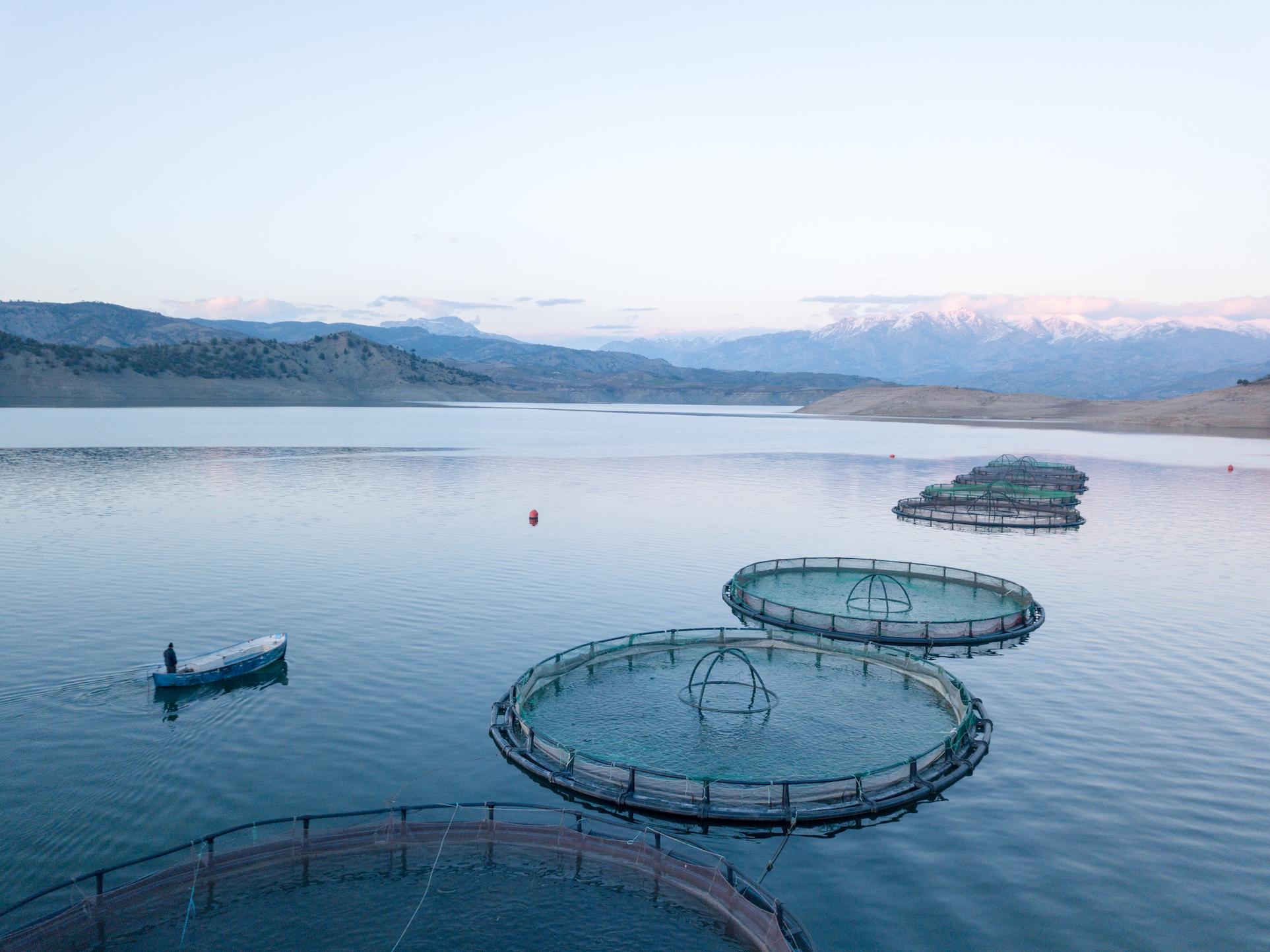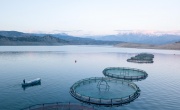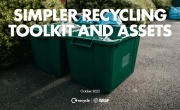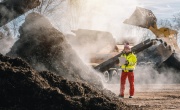Scotland consults on circular economy strategy to 2045
Scottish Government's draft strategy to 2045 sets out roadmaps for five priority sectors and establishes first national circular economy monitoring framework, with consultation running until 13 January 2026 ahead of final publication.
 The Scottish Government has launched a 12-week consultation on its draft Circular Economy Strategy, setting out a vision to 2045 for a net zero and nature positive nation supported by circular economy principles.
The Scottish Government has launched a 12-week consultation on its draft Circular Economy Strategy, setting out a vision to 2045 for a net zero and nature positive nation supported by circular economy principles.
The draft strategy, which closes for responses on 13 January 2026, identifies five priority sectors for action and establishes Scotland's first national monitoring and indicator framework specifically for the circular economy. The final strategy is planned for publication in 2026.
Acting Cabinet Secretary for Net Zero and Energy, Gillian Martin, said: "Reducing, reusing and recycling materials has a huge role to play in Scotland's response to tackling the climate crisis. By supporting Scotland to move towards a culture where keeping materials and goods in use for as long as possible is the norm, we will also be able to drive economic growth by increasing the resilience of our supply-chains and encouraging innovation."
The strategy follows the publication in December 2024 of the Circular Economy and Waste Route Map to 2030, which set out 11 priority actions to accelerate Scotland's transition to a circular economy.
Priority sectors
The draft strategy identifies five priority sectors based on their potential contribution to reaching net zero, reducing consumption and whole-life carbon, maximising economic value, and wider environmental impacts: the built environment, net zero energy infrastructure, textiles, transport, and the food system.
Zero Waste Scotland will develop sector-specific roadmaps for four of these sectors within a year of the final strategy publication, with interventions to be delivered over a five-year period. Transport will not have a separate roadmap as it is a key sector within the forthcoming Climate Change Plan.
For the built environment, which accounts for around 40 per cent of Scotland's emissions and generates up to half of all waste produced in Scotland, priorities include promoting lifecycle assessments for buildings and increasing reuse of construction materials. The strategy references the European CirCoFin project, which is developing plans for regional reuse hubs for construction materials.
The net zero energy infrastructure sector roadmap will address the critical raw materials value chain, with priorities including maximising circularity for materials such as those found in decommissioned wind turbines. The strategy states that refurbishment and reuse options could generate significantly more revenue than traditional recycling or disposal, with potentially £230,000 cost recovery for a 3MW turbine through component reuse.
For textiles, the draft strategy proposes alignment with the EU's textiles strategy where appropriate, including developing a producer responsibility approach and measures to address disposal of unsold consumer goods. The consultation notes that imported textiles, particularly those related to fast-fashion, are often of poor quality, which limits reuse and recycling options.
Transport priorities include improving the circularity of passenger and light goods vehicles, with plans to work on a four-nations basis to align with EU regulations on vehicle design, maintenance and treatment at end of life where possible. The strategy also aims to increase electric vehicle battery repurposing, recycling and material reprocessing.
The food system roadmap will work with the bioeconomy sector to develop circular economy practices across the supply chain. Priorities include developing an intervention plan by 2026/27 to guide long-term household food waste reduction and implementing mandatory reporting for food waste and surplus by businesses from 2025/26.
Boost to the economy
Scotland's circular economy contributed an estimated £7.11 billion in gross value added to the national economy in 2021, accounting for 4.7 per cent of total GVA and supporting 81,447 jobs, according to research published in September 2024 by Zero Waste Scotland. The circular sectors employed 4.4 per cent of Scotland's workforce.
The draft strategy acknowledges that Scotland's material footprint currently stands at 21.7 tonnes per capita, well above the global average of 11.9 tonnes. The strategy states that around four-fifths of Scotland's carbon footprint comes from products and services manufactured, used and disposed of.
The draft strategy outlines seven policy mechanisms to create a circular economy: business support, behaviour change, place-based approaches, procurement, skills and education, circular economy data, and policy alignment and systems thinking.
Zero Waste Scotland will launch a Business Information Hub by March 2026 to provide guidance, best practice and tools, alongside a Circular Jobs Tracker to give insight into employment opportunities. The organisation's Corporate Plan for 2024-2030 targets cutting raw material extraction by one-third by 2030.
The strategy proposes that the Scottish Government will work with the UK Government on reserved issues including opportunities for proportionate due diligence measures to improve supply chain sustainability. It also indicates intentions to align with emerging EU legislation where appropriate, including the Ecodesign for Sustainable Products Regulation and the EU Batteries Regulation.
The draft monitoring framework includes 25 indicators across four themes: economy, environment, international, and social. It states that several indicators require further development, including measures for circular patents, circular startups, population access to circularity options, and societal and business behaviours.
The Scottish Government aims to develop new statutory circular economy targets by 2027, following publication of the monitoring framework. The strategy states these targets will be subject to a separate development and consultation process.
Product stewardship
The draft strategy adopts an evidence-based approach to prioritising products for stewardship measures over the next five years. Zero Waste Scotland is conducting research based on environmental and economic impact to underpin this approach.
The government anticipates that clothing, mattresses and at least one other product will be prioritised for action. A product stewardship plan setting out policy actions is scheduled for publication in 2026.
Existing priorities for product stewardship are packaging, electronics, batteries, vehicles and end-of-life fishing gear, which are subject to UK-wide producer responsibility schemes being reformed on a four-nations basis.
The consultation asks 17 questions covering the vision and outcomes, policy mechanisms, priority sectors, product stewardship, and the monitoring and indicator framework. It also seeks input on accompanying impact assessments covering equality, socio-economic considerations, island communities, business and regulation, environment, consumer duty, and child rights and wellbeing.
Environmental campaigners have described the draft strategy as a welcome step but have identified gaps in its coverage of plastics and health impacts from harmful materials.
Kim Pratt, Senior Circular Economy Campaigner for Friends of the Earth Scotland, said the draft included important elements such as commitments to reduce resource extraction and prioritise communities and workers, but noted significant omissions. She commented: "There is not a single mention of plastics, despite growing concern about the plastics crisis both in Scotland and internationally."
The organisation has called for the final strategy to address health impacts of microplastics, heavy metals and forever chemicals, and to include practical solutions for improving access to reuse and repair services across all communities. Friends of the Earth Scotland also stated that producers should be made to pay for cleanup of products across categories from toys to fishing gear.







